Christoph Noetzli

Assisi thanks Christoph Noetzli for this detailed report. Noetzli, currently an aquarist and the Dive Safety Officer at the Minnesota Zoo, recently presented this case at the Regional Aquatics Workshop in New Orleans. He specializes in elasmobranch (sharks and rays) husbandry and has a strong interest in corals and other marine invertebrates. He has been an aquarist for over 10 years and has worked as a diver for the past 15 years.

For many animals, especially exotic animals, treating pain and wounds can be a challenge. In this particular case, a zebra shark from the Minnesota Zoo had a severe abrasion on its tail. Thankfully, the veterinary staff at the zoo had access to the Assisi Loop to accelerate the healing process.
February 2014
In early February 2014, an abrasion was noticed on the dorsal tip of the shark’s tail. The veterinary staff decided to keep an eye on the wound, but by February 25th, 2014, the abrasion had worsened to the point where cartilage was visible.
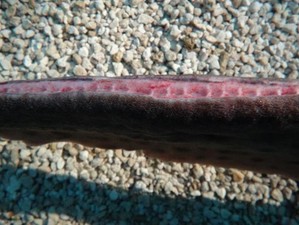
February 25th, 2014
After fish had agitated the wound by picking at it, the staff performed a veterinary exam. Following the exam, they decided to start the shark on the Baytril antibiotic for two rounds.
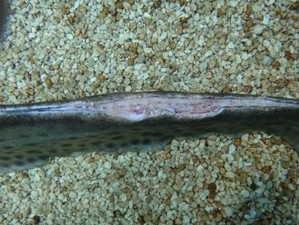
April 7th, 2014
Following 2 rounds of Baytril treatments, the wound had progressed to 1/3 of the shark’s tail length. Over the next several months, a variety of medications were used, including 900 mg Ceftazidime IM injection every 3 days for 15 days and another round of Baytril.
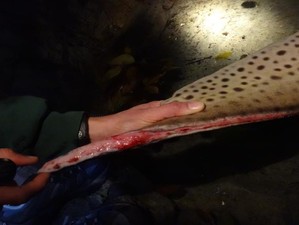
December 13th, 2014
The shark was moved to a Tropical Reef Holding Pool in July, 2014. Although the wound did heal, it was extremely slow and regressed at times. This was likely due to the shark rubbing its tail on the theming, making it more difficult to heal. For that reason, the shark was moved to a separate holding tank in April of 2015.

April 25th, 2015
The veterinary staff began treating the shark’s wound with the Loop. They would do so by capturing the shark and turning it over to induce tonic immobility. The tail was then held out of the water and placed in the Loop.
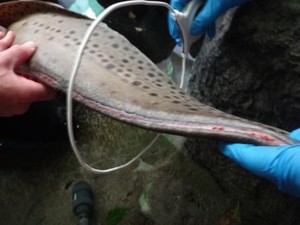
May 16th, 2015
After noticing an improvement in the wound, using the tip of the tail as a kind of control group, the veterinary staff at the Zoo decided to employ two Loops to treat the whole wound.
June 12th, 2015
After being treated with the Loop for approximately a month and a half, it was estimated that 50% of the abrasion had been healed.
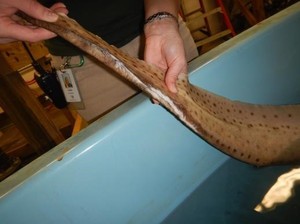
January 2016
By this time, the wound had almost completely healed with the exception of 0.5″ of the tail. While there was some discoloration, the tough, white sharkskin had replaced the area in which the abrasion was located.
